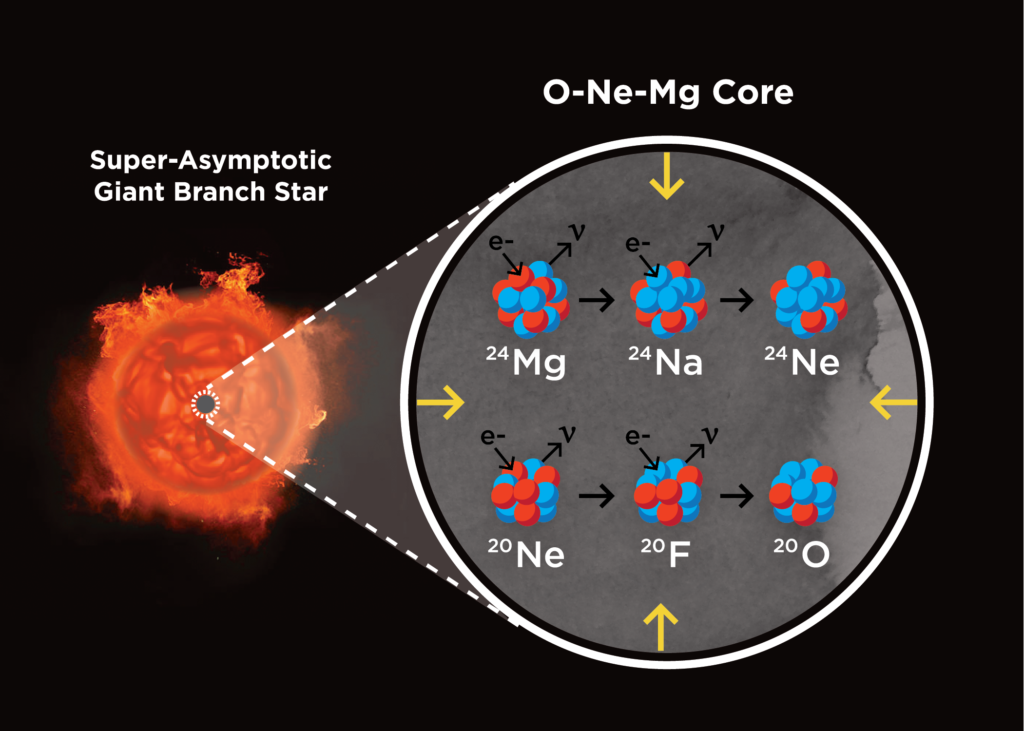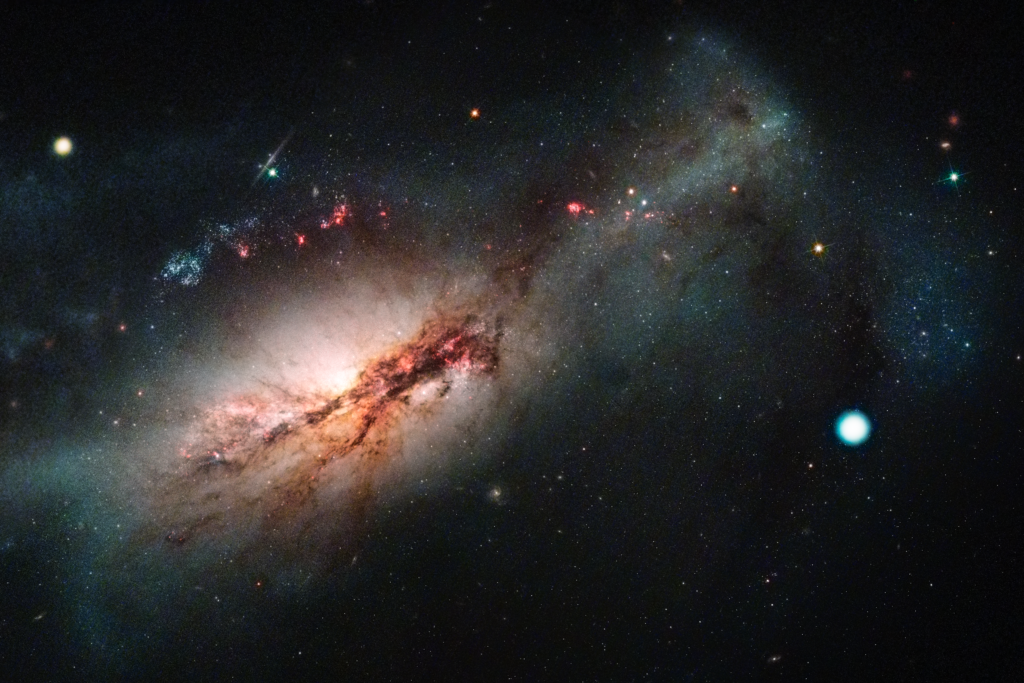Division of Science, NAOJ
A New Type of Supernova Illuminates an Old Mystery
A worldwide team of astronomers has discovered evidence for a new type of stellar explosion — an electron-capture supernova. While this type has been theorized for over 40 years, this is the first observed example. These findings provide clues to the precursor of the Crab Nebula, a supernova observed by cultures all over the world in 1054.
Stars are governed by a balance of gravity causing them to contract and pressure preventing them from contracting. If this balance is disturbed, the results can be a runaway reaction, such as the star exploding in a supernova. Astronomers know of two main supernova types. One is a thermonuclear supernova — the explosion of a white dwarf star (less than about 8 times the mass of the Sun) that steals matter from its partner in a binary star system. The other is a core-collapse supernova where a massive star, one more than about 10 times the mass of the Sun, runs out of nuclear fuel and has its iron core collapse, creating a black hole or neutron star. The electron capture supernovae fit between these two groups, a type of core-collapse that happens to less massive stars, down to about 8 solar masses.
In an electron capture supernova, the pressure become great enough to force electrons into atomic nuclei (Fig. 1). The theory, including the observable characteristics the supernova should have, was formulated in 1980 by Ken’ichi Nomoto of the University of Tokyo and others. The progenitor star should have a lot of mass, lose much of it before exploding, and this material near the dying star should be of an unusual chemical composition. Then the electron capture supernova should be weak, have little radioactive fallout, and have neutron-rich elements in the core.
In this study by the Global Supernova Project, the team found that the supernova SN 2018zd (Fig. 2) had many unusual characteristics, and that these characteristics matched the predictions for an electron capture supernova. During the analysis, members of the team at the National Astronomical Observatory of Japan, Takashi Moriya (Assistant Professor) and Nozomu Tominaga (Professor) assisted with theoretical models of the progenitor star and interpretation of predictions of the changes in brightness expected from electron capture supernovae.
This is the first confirmed example, but it has long been suspected that the Crab Nebula was created by this type of explosion. In 1054 AD, a supernova was observed and according to Chinese records and Japanese records was so bright that it could be seen in the daytime for 23 days, and at night for nearly two years. The resulting remnant — the Crab Nebula — has been studied in detail. It was previously the best candidate for an electron capture supernova, but there was uncertainty partly because the explosion happened nearly a thousand years ago. The new results increase the confidence that SN 1054 was an electron capture supernova. It also explains why that supernova was relatively bright compared to the models — its luminosity was probably enhanced by the supernova ejecta colliding with material cast off by the progenitor star as was seen in SN 2018zd.
These results appeared as Daichi Hiramatsu et al. “The electron-capture origin of supernova 2018zd” in Nature Astronomy on June 28, 2021.
Fig. 1
Artist impressions of a super-asymptotic giant branch star (left) and its core (right) made up of oxygen (O), neon (Ne), and magnesium (Mg). A super-asymptotic giant branch star is the end state of stars in a mass range of around 8-10 solar masses, whose core is pressure supported by electrons (e-). When the core becomes dense enough, neon and magnesium start to eat up electrons (so called electron-capture reactions), reducing the core pressure and inducing a core-collapse supernova explosion.
Credit: S. Wilkinson; Las Cumbres Observatory

Fig. 2
Las Cumbres Observatory and Hubble Space Telescope color composite of the electron-capture supernova 2018zd (the large white dot on the right) and the host starburst galaxy NGC 2146 (towards the left).
Credit: NASA/STScI/J. DePasquale; Las Cumbres Observatory


